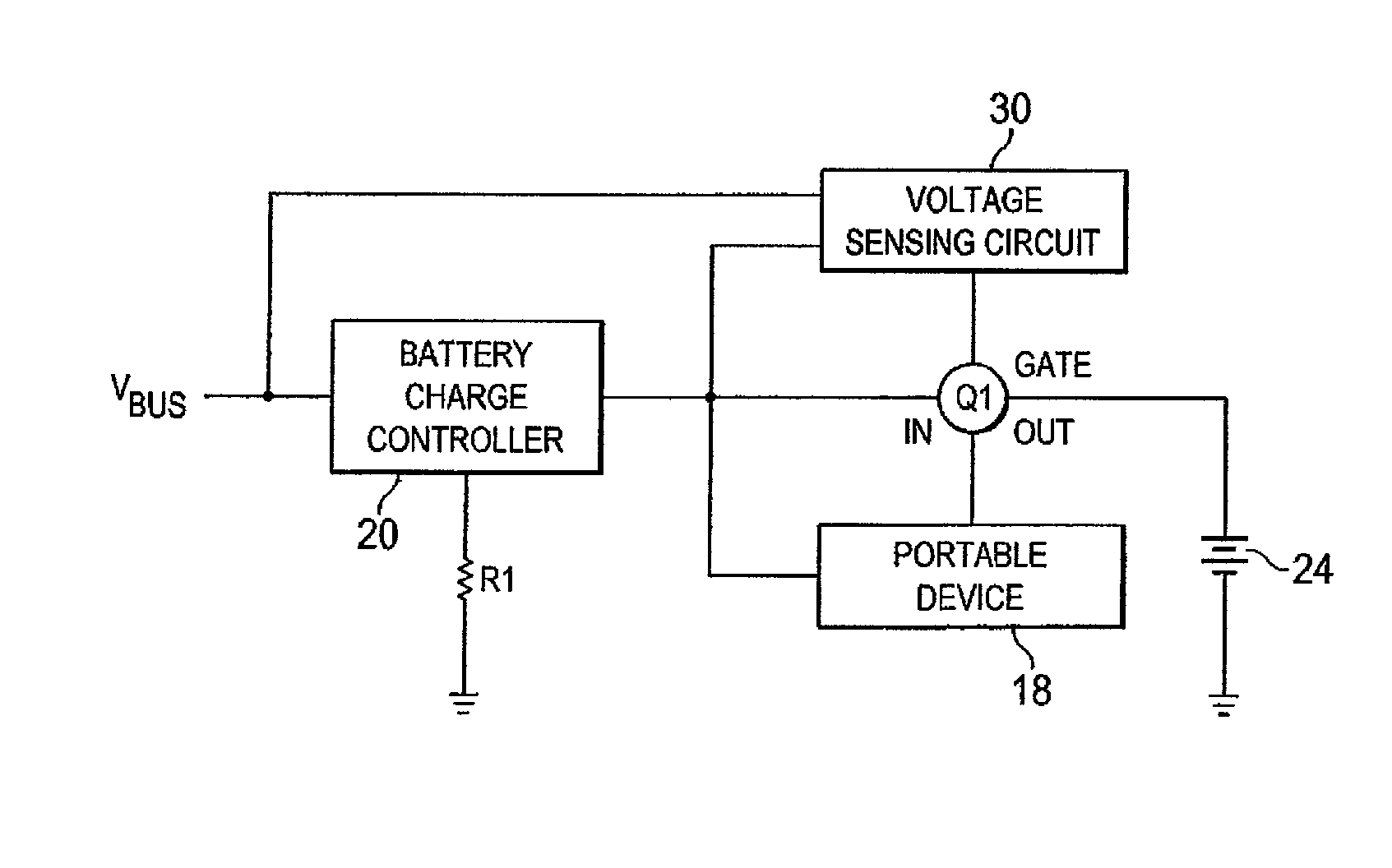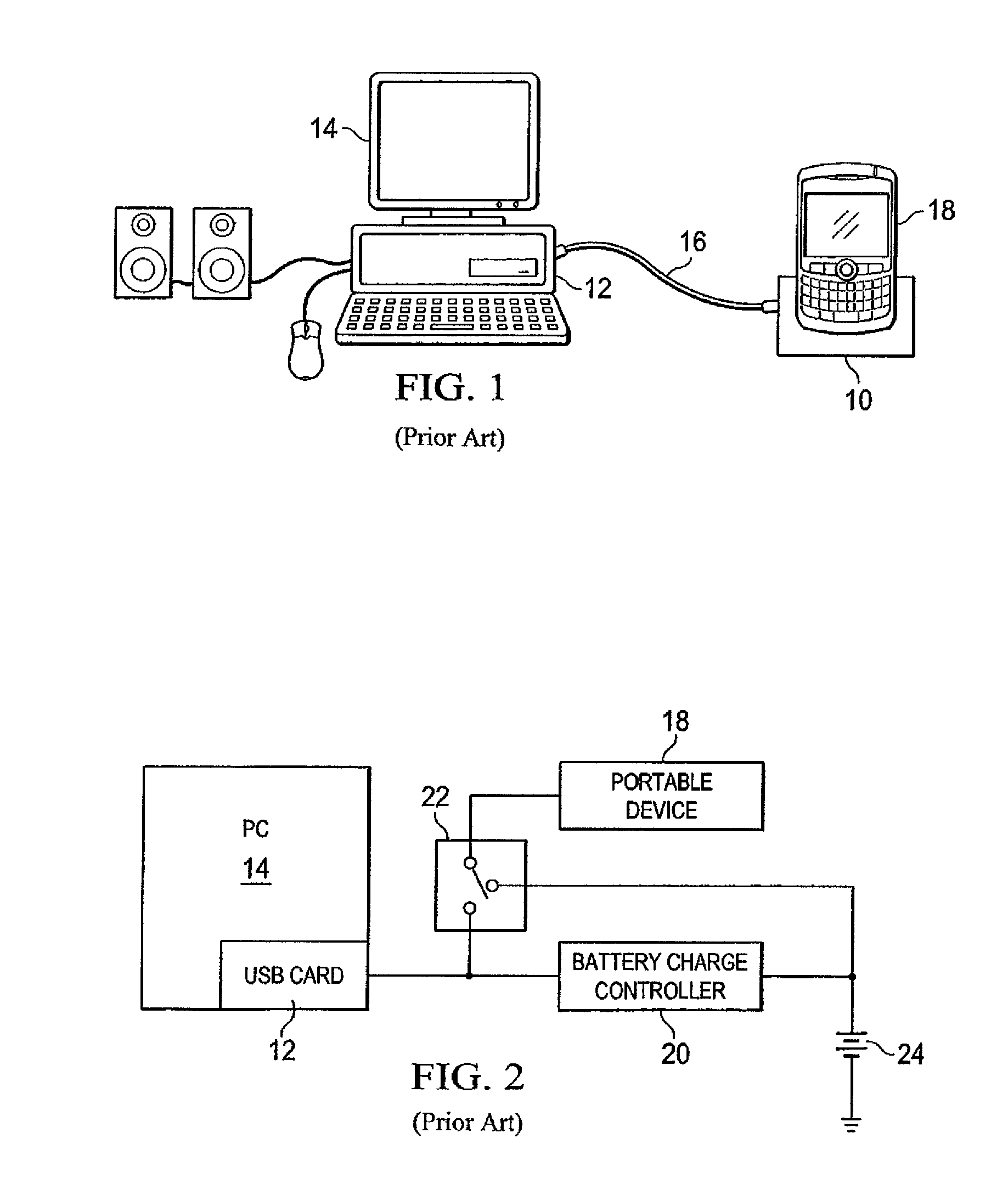Circuit and method of operation for an electrical power supply
- Summary
- Abstract
- Description
- Claims
- Application Information
AI Technical Summary
Benefits of technology
Problems solved by technology
Method used
Image
Examples
Embodiment Construction
[0046]As explained above, there is currently no effective design which is capable of powering both a portable device 18 and a rechargeable battery 24 from a power supply with limited capacity.
[0047]A circuit which overcomes a number of the problems in the art, is presented as a block diagram in FIG. 4. This figure presents a battery charging circuit built around a standard battery charge controller 20. In this embodiment of the invention, the battery charge controller 20 receives power from an external source (VBUS) and feeds a portable device 18 and rechargeable battery or batteries 24 in parallel, but the feed to the battery 24 is made via a semiconductor switch Q1. Control of the current flow through the semiconductor switch Q1 is modulated by a voltage sensing circuit 30 which measures the voltage drop across the battery charge controller 20 and reduces the current flow through the semiconductor switch Q1 to the battery 24 when the voltage drop is too great.
[0048]The voltage sen...
PUM
 Login to View More
Login to View More Abstract
Description
Claims
Application Information
 Login to View More
Login to View More - R&D
- Intellectual Property
- Life Sciences
- Materials
- Tech Scout
- Unparalleled Data Quality
- Higher Quality Content
- 60% Fewer Hallucinations
Browse by: Latest US Patents, China's latest patents, Technical Efficacy Thesaurus, Application Domain, Technology Topic, Popular Technical Reports.
© 2025 PatSnap. All rights reserved.Legal|Privacy policy|Modern Slavery Act Transparency Statement|Sitemap|About US| Contact US: help@patsnap.com



